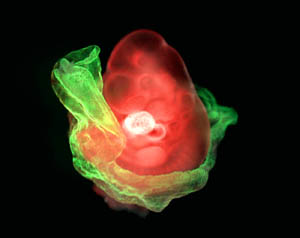Cancer is a condition promoted by cells undergoing an identity crisis. An understanding of how cells control their identity (cell fate specification), and how they organize themselves into normal tissues (morphogenesis) provides the blueprint for the fundamental biological processes that become deregulated in cancer.
The Hadjantonakis laboratory uses high-resolution quantitative methods to investigate the mechanisms underlying stem cell specification, cellular differentiation, tissue organization and growth. They use the mammalian embryo as a platform, and the mouse as a primary model system. They also exploit in vitro cultured stem cells, including pluripotent stem cells, for their studies.
- The goal of our research is to decipher mechanisms underlying cell lineage specification, tissue morphogenesis and the origin of stem cells in mammalian embryos.
- Our laboratory applies a unique and synergistic combination of stem cell, developmental, and computational biology methods.
- Ongoing and future experiments address how local and long-range interactions between a cell, its neighbors and its environment, give rise to an emergent higher-level of organization.
The last twenty years have seen major advances in our understanding of the genetic underpinning of the development of an organism. Genes regulating particular processes have been identified and, in many instances, they have been linked to diseases, but how genetic information is transformed into tissues and organs remains an open question.

Mouse embryo expressing a red fluorescent protein (RFP) reporter. Extra-embryonic tissues which are essential for normal embryo development express a green fluorescent protein (GFP) reporter.